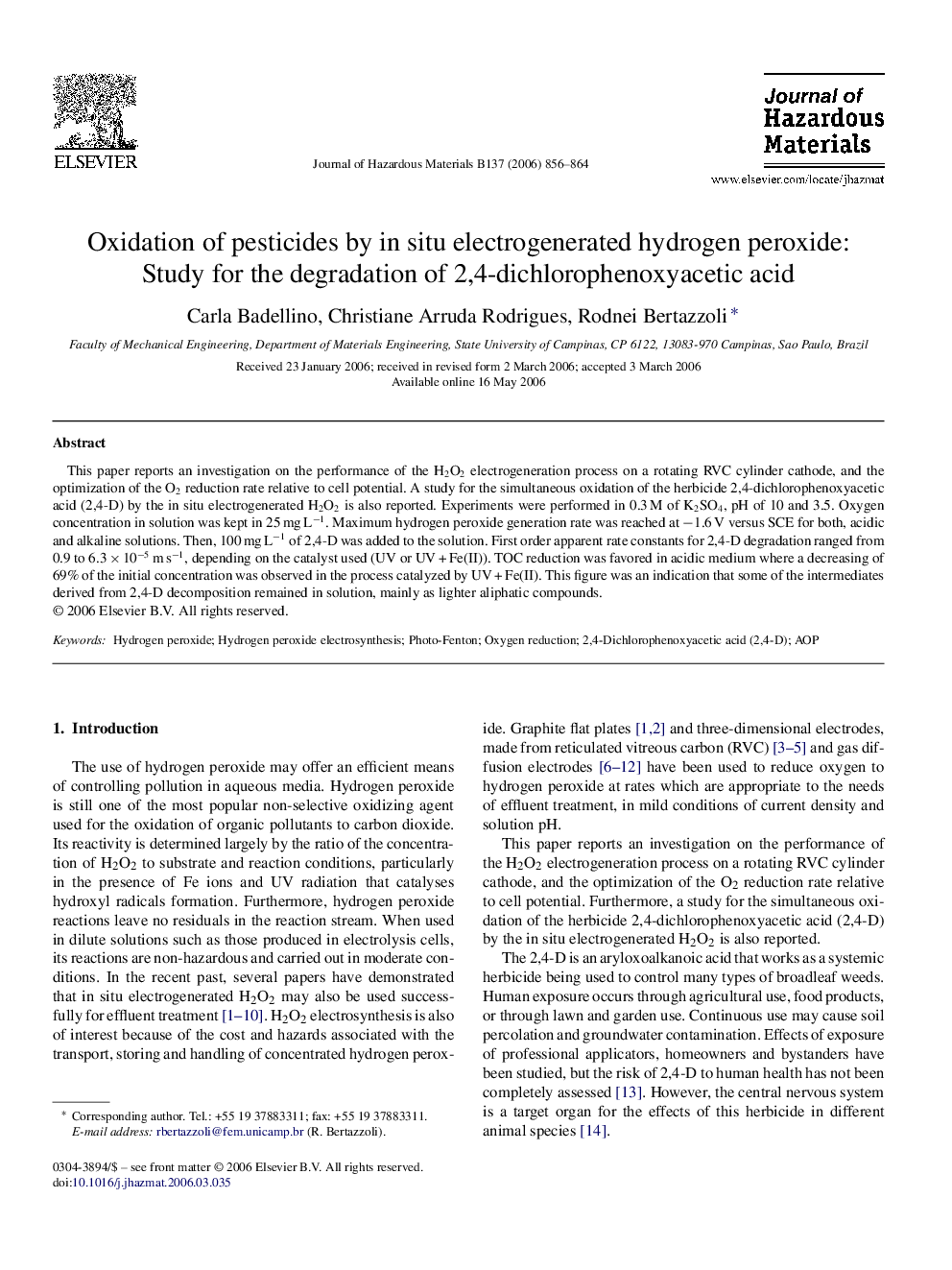| Article ID | Journal | Published Year | Pages | File Type |
|---|---|---|---|---|
| 585327 | Journal of Hazardous Materials | 2006 | 9 Pages |
Abstract
This paper reports an investigation on the performance of the H2O2 electrogeneration process on a rotating RVC cylinder cathode, and the optimization of the O2 reduction rate relative to cell potential. A study for the simultaneous oxidation of the herbicide 2,4-dichlorophenoxyacetic acid (2,4-D) by the in situ electrogenerated H2O2 is also reported. Experiments were performed in 0.3 M of K2SO4, pH of 10 and 3.5. Oxygen concentration in solution was kept in 25 mg Lâ1. Maximum hydrogen peroxide generation rate was reached at â1.6 V versus SCE for both, acidic and alkaline solutions. Then, 100 mg Lâ1 of 2,4-D was added to the solution. First order apparent rate constants for 2,4-D degradation ranged from 0.9 to 6.3 Ã 10â5 m sâ1, depending on the catalyst used (UV or UV + Fe(II)). TOC reduction was favored in acidic medium where a decreasing of 69% of the initial concentration was observed in the process catalyzed by UV + Fe(II). This figure was an indication that some of the intermediates derived from 2,4-D decomposition remained in solution, mainly as lighter aliphatic compounds.
Related Topics
Physical Sciences and Engineering
Chemical Engineering
Chemical Health and Safety
Authors
Carla Badellino, Christiane Arruda Rodrigues, Rodnei Bertazzoli,
